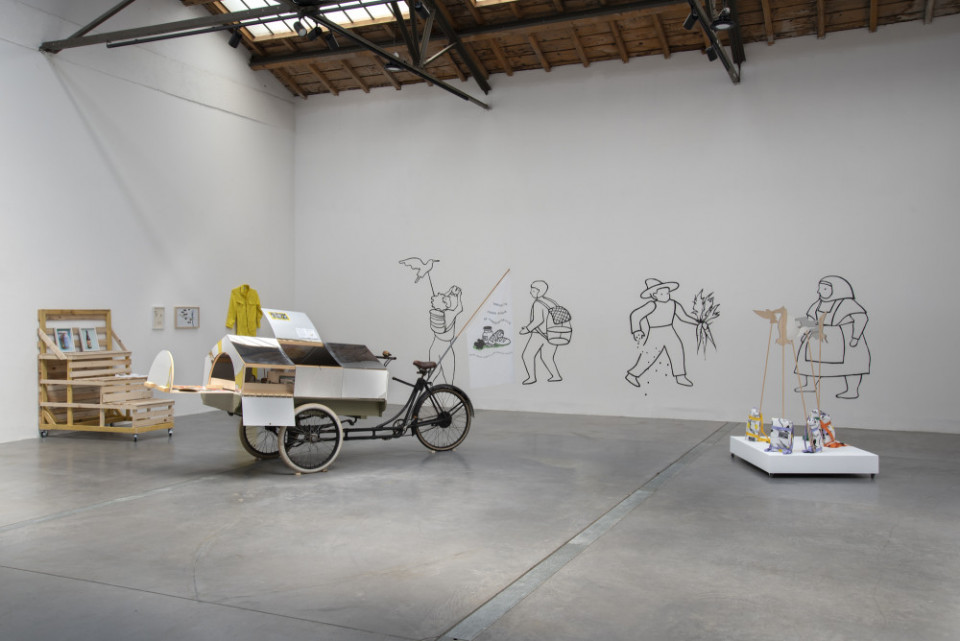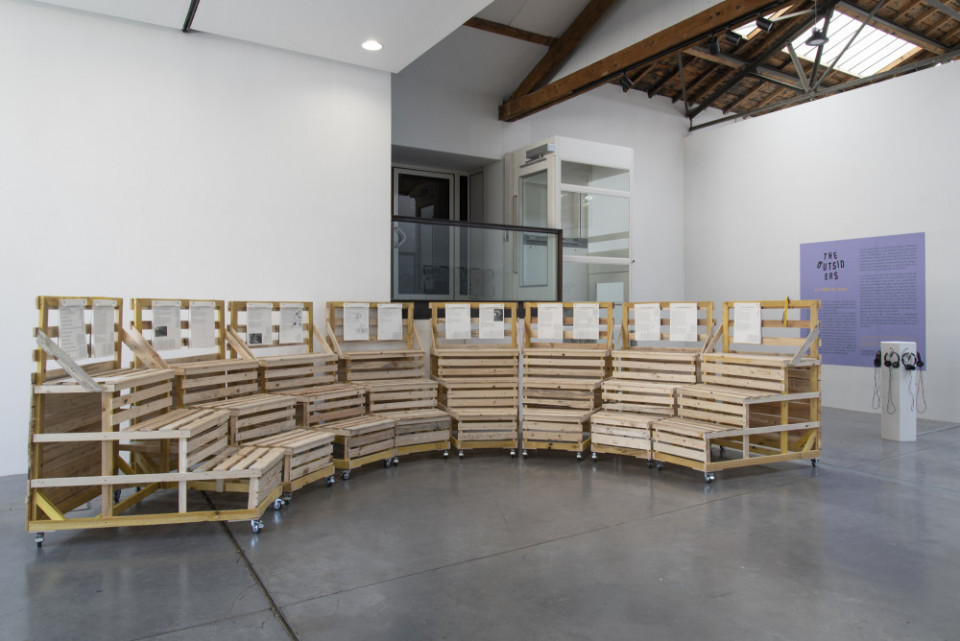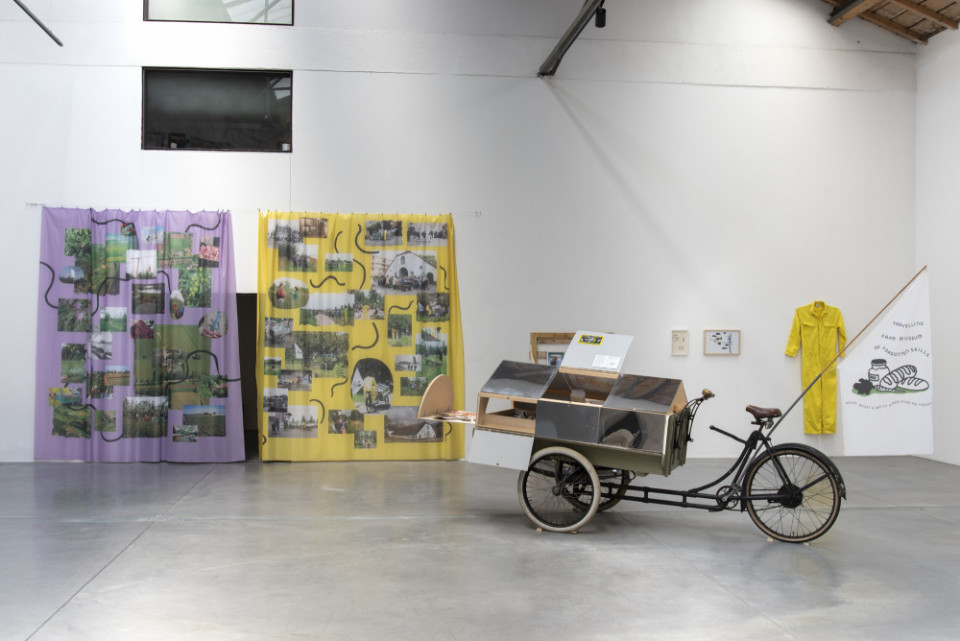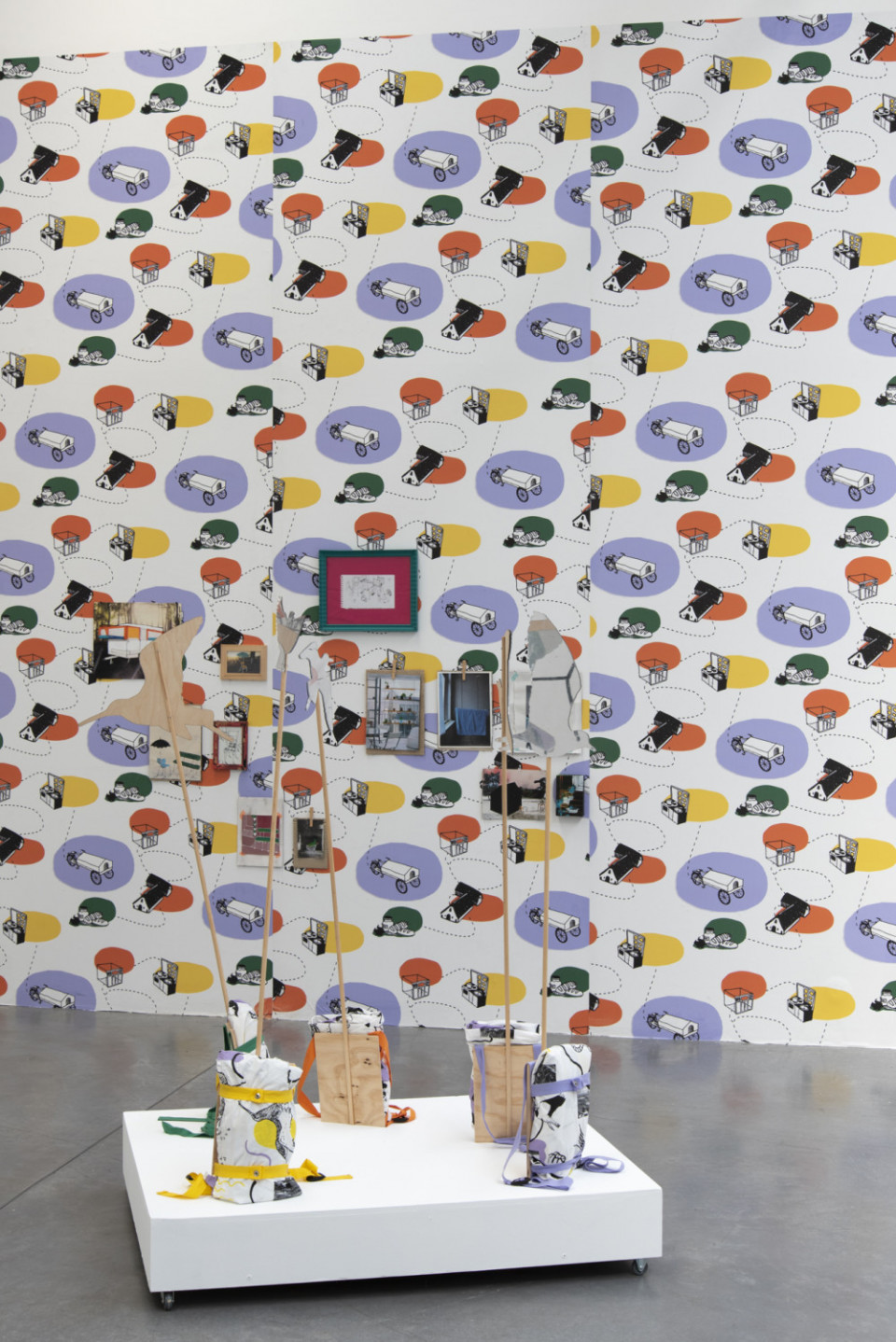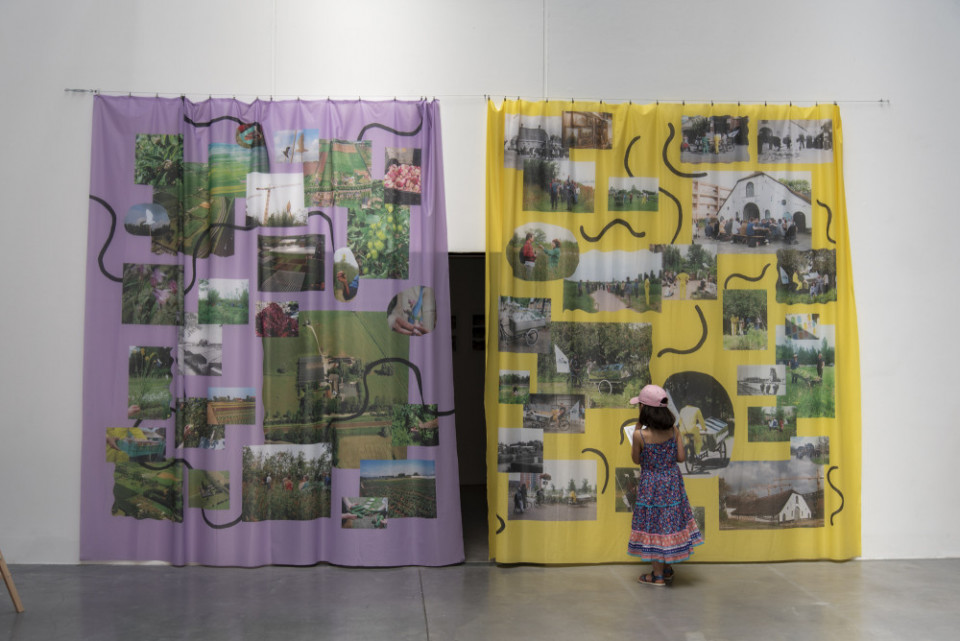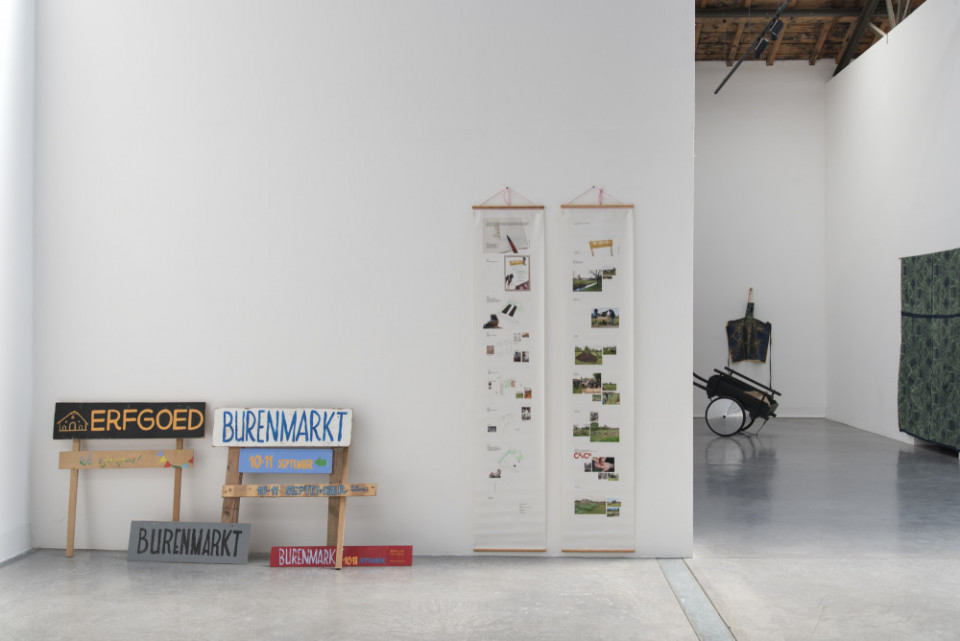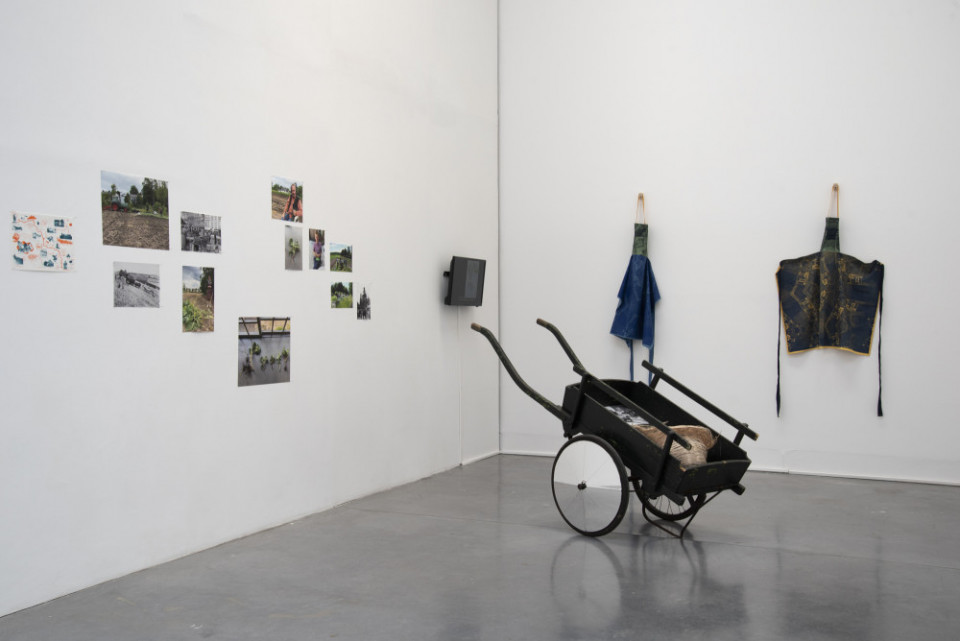The Outsiders
The City in Play, Sandbox #1
Exposition
The Outsiders, La ville en jeux (The City in Play)
During the summer months, 19, Crac offers to transform itself partially into a playground for the artists and the public by means of «sandbox» works to be activated. The term evokes both the container of sand for children and a type of video game. Sandbox games are essentially characterized by the absence of imposed objectives. They are designed in a non-linear way to stimulate the curiosity and creativity of the players in a given universe. In the same way, the “sandbox” exhibitions are open to appropriation within the art centre. They are built from invitations to visual artists, but also to architects and town planners.
Sandbox#1 was commissioned to The Outsiders, a collective of architects, cooks, artists, and educators from Utrecht (the Netherlands). They call themselves a “union” whose mission is to implement several services to people, to the environment and to the society in general. By creating alternative meeting situations in the public space, The Outsiders meet the residents, often through the prism of play. Their aim is to include them in a process of co-thinking that generates forms of public art or architecture, whether perennial or ephemeral.
As much attached to the process as to the final product, the collective is keen to share its method of «unlearning» 1 which is essential for connecting people to their territory and remembering that «A neighbourhood is not only an association of buildings but also a network of social relationships, an environment where the feelings and the sympathy can flourish» 2. Mapping workshops, walks, meetings, and debates are all tools that the collective deploys to create common creative situations.
It also defends an artistic approach that is part of a long-term process and that relies on sustainable and local means of production, anticipating the subsequent uses and reuses of the creations. The Outsiders have created playgrounds, bus shelters, community gardens, squares and even rehabilitated a farm. During their experiments, they have also gathered an intangible heritage which is then disseminated in the form of educational workshops or a travelling museum.
The exhibition is an opportunity to present a retrospective of their artistic projects. For the first time, it brings together plastic works related to productions in the public space in Utrecht, Maastricht, and Rio de Janeiro. Photographs, videos, drawings, sketches, publications, and objects reflect their emancipatory practices. Participatory projects such as Erfgoed - Center for Ecological (UN)learning; de Rijzende Glij- baan; de Halte; The Travelling Farm Museum of Forgotten Skills; Vinexmarkt; Sistema Lento; Burenmarkt; Muziekplein or Sjellik and Mooswief are in consequence documented. Furthermore, in Montbéliard, The Outsiders has chosen to put the “city into play” [translation of the title of the exhibition La Ville en jeux] and to bring it into the art centre. Based on the commonalities between the distant geographies they have explored - such as post-industrial and post-colonial issues or areas of friction between rural and urban life - the collective walked through the city last March. The residents-ambassadors and participants of this urban walk, formed a spontaneous assembly that revealed some of the invisible cities that make up Montbéliard, through personal anecdotes or references to the more distant history of the «enclave 3».
The Outsiders’ exhibition La ville en jeux thus brings together the dynamics at work today in the practices of a New Genre Public Art 4 which carry within them “an ambition to transform reality, which, however modest, insists on the need to move from the symbolic to forms of action 5»
Adeline Lépine
- “Learning is often progress-oriented, institutionally driven, and focused on the accumulation of knowledge, skills and behaviour. In contrast, unlearning is directed towards embodied forms of knowledge and the (un)-conscious operation of ways of thinking and doing. Unlearning denotes an active critical investigation of normative structures and practices in order to become aware and get rid of taken-for-granted «truths» of theory and practice.” Unlearning Exercices, Art Organizations as Sites for Unlearning, directed by Casco Art Institute: Working for the Commons, Valiz, Amsterdam, 2018. ↺
- Lewis Mumford, The Urban Prospect, 1968. In this passage, Lewis Mumford refers to a lecture at Harvard by Jane Jacobs, author, human rights activist and philosopher of architecture and urbanism. ↺
- Reference to the title of Jean-Paul Goux’s book about Montbéliard, Mémoires de l’enclave, collection Babel, Actes Sud, 2003. ↺
- In her collective work, Mapping the Terrain - New Genre Public Art (Bay Press, 1995), Suzanne Lacy aims to compile critical texts, reflections, and research on the developments of a certain public art since the 1970s, which at the time did not have its own definition. “If new genre public artists are envisioning a new form of society—a shared project with others who are not artists, working in different manners and places—then the artwork must be seen with respect to that vision and assessed in part by its relationship to the collective social proposition to which it subscribes. That is, art becomes one’s statement of values as well as a reflection of a mode of seeing”. ↺
- « Edito » from microsillons in Master TRANS – Pratiques artistiques socialement engagées, expériences en commun 2021-2022. Penser avec, Bienne, Editions HEAD Genève, 2023. The English version is suggested by the translator of the press release. ↺
Infos utiles
Curator of the exhibition: Adeline Lépine
The Outsiders is a Dutch collective founded by Txell Blanco and Asia Komarova. The project at 19, Crac also brings together Merel Zwarts and Leonardo Siqueira within the collective.
The exhibition La Ville en jeux is based on collaborations with the Municipal Archives of the City of Montbéliard, the Jardins Familiaux du Mont Bart of the City of Montbéliard, the Festival des Mômes, the Centre Social La Lizaine of Béthoncourt, the Coteau-Jouvent school in Montbéliard, the Casco Art Institute in Utrecht (the Netherlands), as well as the Damassine du Pays d’Agglomération de Montbéliard in Vandoncourt as part of the agglomeration project «les Couleurs de l’agglo».
Download the press release
Download The Outsiders' interview by Colin Sterling
Télécharger le cahier des expositions
